California Camping
California Camping SitesNational Parks of California
California State Parks
State Parks Camping Fees
State Parks Day Use Fees
State Parks WiFi Access
Cabrillo National Monument - Guide to California's Cabrillo National Monument
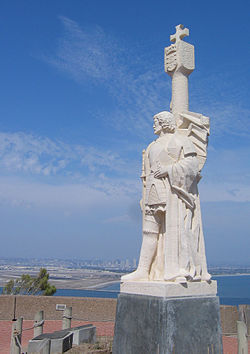
Statue of Cabrillo in Cabrillo National Monument in San Diego, CA
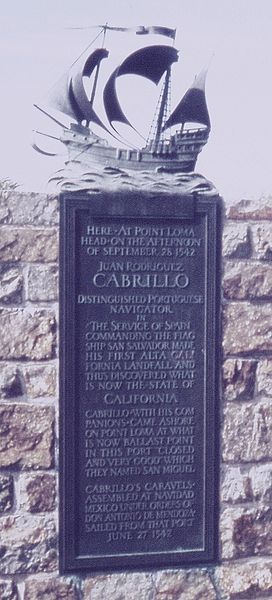
Plaque at Cabrillo National Monument, Point Loma, near San Diego, CA
Climbing out of his boat and onto shore in 1542, Juan Rodriguez Cabrillo stepped into history as the first European to set foot on what is now the West Coast of the United States. In addition to telling the story of 16th century exploration, the park is home to a wealth of cultural and natural resources. Join us and embark on your own Voyage of Discovery.
At the time Juan Rodriguez Cabrillo sailed into San Diego Bay in 1542, a rich diversity of life was present, ranging from desert cactus to moisture-loving algae, tarantulas to sea slugs, and gray foxes to sea lions. Approximately 3,000 Native Americans lived in the San Diego area at that time. The Kumeyaay, or Diegueños according to the Spanish accounts, lived simply in the environment but likely impacted the landscape through the use of fire. Today, largely due to the impacts of European colonization and centuries of growth and development, the habitat Cabrillo saw is now among the rarest in the world. Although only a remnant of that biologically diverse ecosystem remains, it is well worth visiting and protecting. This unique diversity of plants and animals occurs here because CabrilloNational Monument lies at the southern-most extent of some plant and animal ranges, and the northern-most extent of others.
Did you know that Cabrillo National Monument boasts one of the best harbor views in the world? On clear winter days, you can experience a panorama that stretches from Mexico to the snow-capped mountains east of Los Angeles.
Located in a large metropolitan area just west of the city of San Diego, Point Loma encompasses more than 660 acres of native habitat. Cabrillo National Monument rests protected on 160 acres at the southern-most tip of the peninsula, which is bordered by the Pacific Ocean on the west, San Diego Bay on the east, and urban development on the north.
Cabrillo National Monument enjoys a Mediterranean climate characterized by warm, dry summers and cool, mild winters. Weather data is recorded for San Diego at Lindbergh Field (the airport) which is directly across the bay from the monument. The average annual temperature is 64 degrees and the average annual rainfall is a scant 9.5 inches. Rainfall is concentrated in the winter, from November to April, but the amount can drastically change year to year, from 3.4 inches to 19.4 inches. This variability in rainfall causes certain types of plants to thrive one year and barely survive another. Nature makes up for this lack of rain when cold air from the ocean meets the balmy air on the land and dense fogs roll in. The fog adds moisture to allow species requiring more water to coexist with the desert plants and animals. The ocean also keeps air temperatures mild year-round, which allows heat-loving cactus to grow next to evergreen shrubs common in cooler climates, salamanders to walk past sunning desert snakes, and mosses to grow in the cool shade, a stone’s throw from where parched lichen cling to dry, hot boulders.
In addition to the unusual climate, Cabrillo National Monument hosts many uncommon species of birds because of its location along the Pacific flyway. Over 200 species of birds have been recorded at here, including land, shore, and sea birds. It is not uncommon to see a tiny ruby-crowned kinglet hopping through a bush on land, huge brown pelicans flying silently low in formation over the ocean waves, and a solitary red-tailed hawk soaring overhead searching for its next meal.
On the west side of the park, a rocky interface between the land and the ocean provides a spectacular coastline and fascinating habitats to explore. A myriad of marine plants and animals, including lacy red and slimy green algae, sluggish sea hares, leggy octopi, darting fish, and the always entertaining hermit crabs, live in this rocky intertidal area. Also on the west side of the park and just past the intertidal area, but not yet reaching the horizon, visitors can see the imprints of the kelp forest on the ocean surface. This subtidal zone is an underwater forest with large kelp that provides food and shelter for some of the animals that live there: snails, urchins, abalone, sea stars, kelp bass, sheephead, and octopi. From December to March, visitors can look beyond the kelp forest toward the horizon and see the Pacific Gray Whale pass by the shores on its annual migration from Alaska to Baja California, Mexico, where it will birth and rear its young.
Juan Rodriguez Cabrillo of Cabrillo National Monument
Crossbowman, wealthy landowner, shipbuilder, explorer. Learn more about
Juan Rodriguez Cabrillo and his Voyage of Discovery.
Old Point Loma Lighthouse of Cabrillo National Monument
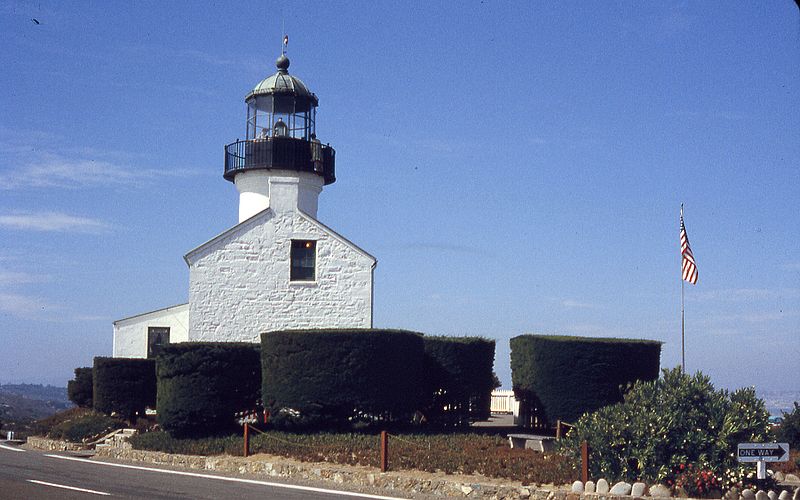
Old Point Loma Lighthouse
The Old Point Loma Lighthouse has been safely guiding mariners into the harbor of San Diego since 1855. Come see what life was like out on this once-lonely outpost.
Natural Resources of Cabrillo National Monument
Cabrillo National Monument is rich in natural resources, both on land
and in the water. Learn more about the plants and animals found here that
have adapted and thrive in this sometimes harsh environment.
Military History of Cabrillo National Monument
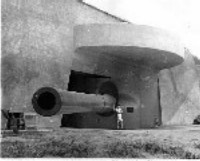
Massive 16-inch gun formerly at Battery Ashburn. After the war, it was dismantled and sold for scrap in Cabrillo National Monument
Point Loma played an important part in this country's military history. Today, see remnants of the coastal defense systems that are preserved within Cabrillo National Monument.
The Point Loma peninsula forms a natural protective barrier at the entrance to San Diego Bay, rising 422 feet to provide strategic views of the harbor and ocean. In 1852, the government of the United States recognized the importance of this sandstone rampart and designated the area as a military reserve. In 1899, the War Department dedicated Fort Rosecrans and built a series of gun batteries over the years. During World War I and II, military facilities on the Point provided vital coastal and harbor defense systems. Between 1918 and 1943, the Army constructed searchlight bunkers, fire control stations, and gun batteries. The largest guns were at Battery Ashburn, adjacent to the park entrance station, where two 16-inch guns could fire 2,300 pound shells nearly 30 miles out to sea.
Map of Cabrillo National Monument
Here is the main attraction of Cabrillo National Monument
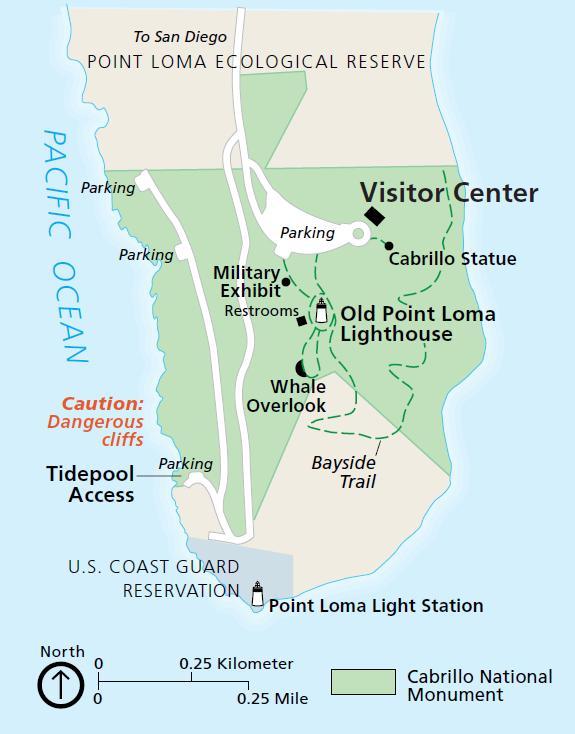
Map of Cabrillo National Monument with Attractions Highlighted
Other National Park Service sites with Coast Sage Scrub Habitat:
Santa Monica Mountains National Recreation Area
Channel Islands National Park
Climate in Cabrillo National Monument
Below is the current temperature and weather forcast for Cabrillo National Monument
The park is cool, shaded and moist year round. Daytime temperatures range between 40 and 70 degrees Farenheit. Rainfall is heavy during the winter and summers are almost completely dry with the exception of fog drip caused by the fog passing through the trees. Annual precipitation in the park ranges from 39.4 inches (1,000 mm) in the lower valley to 47.2 inches (1,200 mm) higher up in the mountain slopes.
Location of Cabrillo National Monument
The Cabrillo National Monument can be contacted at (619) 557-5450. For the location use following GPS cordinates of Cabrillo National Monument 32°40'23"N 117°14'19"W. The address of Cabrillo National Monument is Sylvester Rd, San Diego, CA 92106 and the map is shown below:
Here is a detailed list of other National Parks of California besides Cabrillo National Monument.
| National Parks of California | |||||||||||||||||||||||||
|---|---|---|---|---|---|---|---|---|---|---|---|---|---|---|---|---|---|---|---|---|---|---|---|---|---|
|
|||||||||||||||||||||||||
Camping Resources
Free Services
Free Text MessagesFree Picture Messages
Free Fax
Free Calls